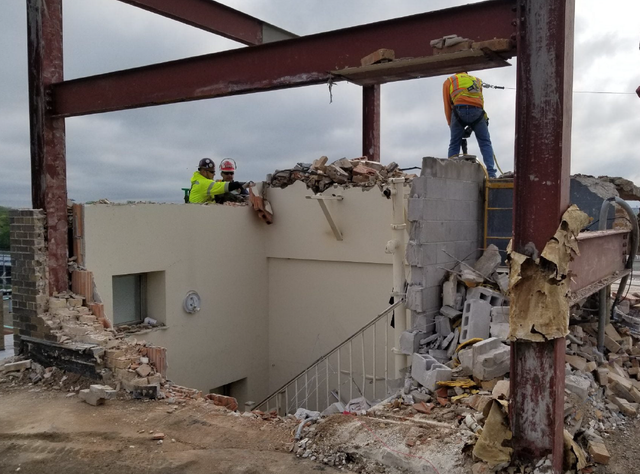The Ultimate Overview to Interior Demolition Techniques and Equipments
Within the world of indoor restorations, the art of demolition is a pivotal stage that requires accuracy, ability, and the right collection of devices. Whether you are a seasoned specialist or a DIY lover, recognizing the details of indoor demolition strategies can make all the distinction in accomplishing an effective task end result.
Essential Interior Demolition Devices
When taking on indoor demolition tasks, having the appropriate devices is essential for efficiency and safety and security. One of the most crucial devices for interior demolition is the demolition hammer. This durable device is made to damage via tough products like drywall, ceramic tile, and concrete.
Its ability to make accurate cuts in tight spaces makes it suitable for demolition job. On the whole, having these essential interior demolition tools will significantly enhance the effectiveness and safety and security of any demolition job.

Safety Safety Measures Throughout Demolition

Furthermore, all workers entailed in the demolition procedure need to get sufficient training on the proper handling of devices and equipment to lessen crashes. By sticking to these security preventative measures, indoor demolition projects can be brought out effectively while prioritizing the wellness of all individuals involved.
Techniques for Removing Wall Surfaces
Implementing proper safety and security preventative measures during interior demolition jobs is crucial for creating a protected workplace, and one key facet of such projects entails understanding methods for removing wall surfaces. One frequently used approach is manual demolition, which needs using standard hand devices such as sledgehammers, crowbars, and utility blades to meticulously take down the wall surface item by piece. This method permits higher control over the demolition process, especially in delicate areas where accuracy is necessary.
For bigger, much more complicated walls, mechanical demolition may be essential. This involves utilizing heavy equipment like excavators or bulldozers to tear down wall surfaces effectively. It is important to make certain that the architectural honesty of the building is not endangered during mechanical demolition.
Another method for eliminating wall surfaces is deconstruction, where the wall surface is taken apart in a means that preserves reusable materials. This sustainable technique is ecologically friendly and useful source can additionally help in reducing disposal prices. Whichever strategy is utilized, it is essential to comply with correct safety and security protocols and think about the structural effects of wall surface removal to ensure an effective interior demolition project.
Removing Floor Covering Like a Pro
Efficiently removing flooring during interior demolition needs the appropriate devices and strategies to ensure a effective and smooth process. Furthermore, having a dumpster or designated disposal location ready for the eliminated flooring materials is important for preserving a tidy job atmosphere. By following these strategies and making use of the right devices, getting rid of floor covering like a pro can be accomplished efficiently and efficiently.
Proper Waste Disposal Approaches
After efficiently eliminating floor covering using the proper devices and techniques, the next critical step in the interior demolition process is implementing proper waste disposal methods. Appropriate waste disposal is crucial for keeping a clean and secure work atmosphere throughout and after demolition.

Specialists must comply with local laws relating to waste disposal to prevent fines and penalties. Utilizing professional waste management solutions can enhance the disposal process and guarantee conformity with environmental guidelines. By carrying out appropriate waste disposal methods, indoor demolition jobs can be completed effectively and sustainably.
Conclusion
To conclude, interior demolition calls for the usage of important devices and rigorous safety precautions to make sure a safe and successful process. Methods for getting rid of wall surfaces and floor covering should be done meticulously and efficiently to avoid any type of damages or accidents. Appropriate waste disposal approaches are additionally critical to preserve a well organized and clean workplace. By complying with these official source standards, interior demolition can be completed properly and with minimal risks.
One of the most essential devices for indoor demolition is the demolition hammer (interior demolition). In general, having these necessary indoor more info here demolition devices will considerably improve the effectiveness and safety and security of any kind of demolition job
Efficiently removing flooring during indoor demolition calls for the appropriate tools and methods to make sure a smooth and effective procedure.After effectively removing flooring using the suitable tools and strategies, the following critical step in the interior demolition procedure is applying correct waste disposal methods.In conclusion, interior demolition requires the usage of crucial tools and rigorous safety and security precautions to ensure a successful and secure process.